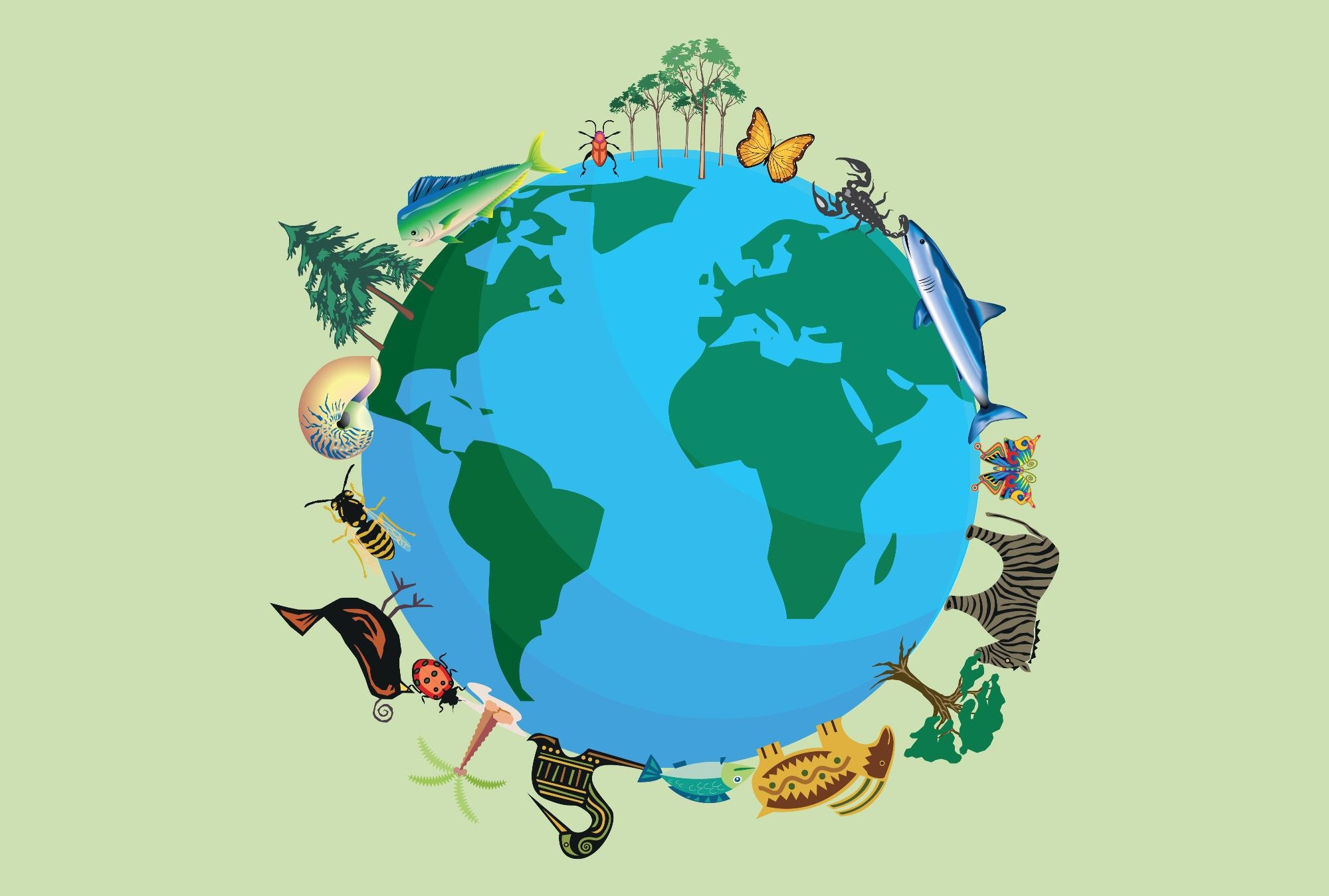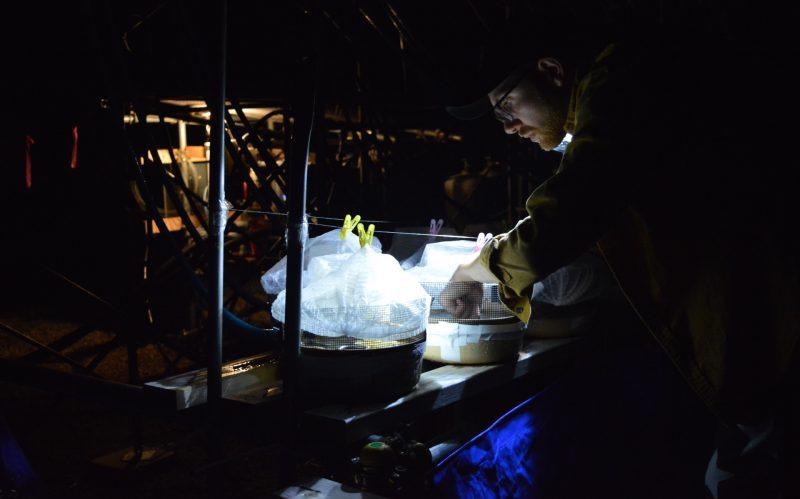Researchers in Ireland and Japan have discovered that predator species may help mitigate the impact of climate change on the loss of biodiversity. This highlights the importance of preserving biodiversity in the wake of a globally warming climate.

Image Credit: Shutterstock.com/ Monphoto
What is Biodiversity?
Biodiversity describes the variety of species, organisms and life forms in a given ecosystem. Bacteria, fungi, plants, animals, humans and microorganisms make up these ecosystems. The variety of species and life forms helps maintain a healthy balance within these ecosystems. For humans, biodiversity helps provide shelter, food, medicine and clean water.
Biodiversity describes all levels of life, from individual genes to communities of species, to entire ecosystems such as forests. Biodiversity has sustained life on Earth for billions of years.
Biodiversity is not evenly distributed across the globe, with tropical forest ecosystems (covering less than 10% of the globe) supporting some 90% of the world’s species. Equally, marine biodiversity is highest in the mid-latitudinal regions of the oceans and along the coasts of the Western Pacific.
Only a fraction of the species on Earth have been recorded (that is, about 1.7 million species of plants, animals and fungi), with an estimate of up to 100 million remaining uncatalogued. This does not include the various species of bacteria and viruses, which likely number in the billions.
Mass extinctions are not a new phenomenon. In fact, in the last 500 million years, there have been five mass extinctions, with up to 90% of all the species on Earth having become extinct. However, the rate of extinction we are experiencing today is alarming. Scientists estimate that it is occurring hundreds of times faster than it would occur naturally, with mass extinction predicted in as little as 240 years.
Without biodiversity, there is no future for humanity.
Professor David Macdonald, Director of the Wildlife Conservation Research Unit, Oxford University
Importance of Biodiversity to Human Life
Currently, 75% of the world’s food supply is sustained by just five animal species and a dozen crops. This leaves our food supplies vulnerable to diseases and pests. Conversely, there are tens of thousands of rarely cultivated species that could be a rich source of food while also being resistant to disease and climate change. The loss of biodiversity threatens the survival of these species.
The World Wildlife Fund estimates that nature provides $125 trillion worth of “services” to humanity each year by ensuring the supply of fresh air, clean water, food, energy and more. In Europe alone, it is estimated that the loss of biodiversity costs the continent 3% of its GDP every year.
Without plants, there would be less oxygen to breathe. Without bees, there would be no cross-pollination to grow fruits and nuts. Less obviously, coral reefs provide protection against cyclones, and wild varieties of crops and animals have adapted to drought.
Loss of Biodiversity
Human activities related to housing, farming and industry are pushing nature to the brink. The World Wildlife Fund estimates that 75% of land and 66% of ocean environments have been significantly altered by human activity. Furthermore, over a third of the world’s land surface and close to 75% of freshwater resources have already been devoted to farming.
Pollution is particularly harmful to marine life, and global trade has contributed to the spread of disease. It is estimated that freshwater animal populations have declined by 81% since 1970 due to pollution, dams and water extraction for farming.
In its Living Planet Report 2018, the World Wildlife Fund also estimates that there has been a 60% decline in the populations of mammals, birds, fish, reptiles and amphibians.
The IPBES reports in its 2019 Global Assessment Report on Biodiversity and Ecosystem Services that one million plant and animal species are currently threatened with extinction.
Also, a third of the world’s parasites are threatened by climate change. Although they are usually undesirable, their extinction threatens to destabilize entire ecosystems.
How Does Climate Change Impact Biodiversity?
The scientists from Trinity College Dublin and Hokkaido University in Japan recreated communities of freshwater organisms in investigational streams at the Tomakomai Experimental Forest in Northern Japan. The communities were exposed to heatwaves of realistic intensity. A predator (a sculpin fish) was introduced into some communities, while other communities were spared.

Dr. Samual Ross monitoring the experiments at night. Image Credit: Trinity College Dublin. (2022). Predator species help to buffer climate change impacts on biodiversity – new research. Trinity News and Events. [online] Available at: https://www.tcd.ie/news_events/articles/predator-species-help-to-buffer-climate-change-impacts-on-biodiversity-new-research/
We found that predator extinctions can interact with heatwaves to further undermine the stability of ecosystems. This highlights how the climate and biodiversity crises are completely intertwined, really just two sides of the same coin.
Dr. Samuel Ross, Researcher, Department of Zoology, Trinity College Dublin
The researchers discovered that the heat waves destabilized communities of algae present in the streams so that they began to resemble each other, indicating a loss of biodiversity. Interestingly, however, this only occurred in the communities where sculpin fish had not been introduced.
Our work shows how intact ecological communities can play a critical role in mitigating against the effects of climate change, and underscores how conserving biodiversity is key to ensuring a sustainable future for humanity.
Dr. Jorge García Molinos, Associate Professor, Arctic Research Center, Hokkaido University
References and Further Reading
Trinity College Dublin. (2022). Predator species help to buffer climate change impacts on biodiversity – new research. Trinity News and Events. [online] Available at: https://www.tcd.ie/news_events/articles/predator-species-help-to-buffer-climate-change-impacts-on-biodiversity-new-research/
World Wildlife Fund. What is biodiversity? [online] Available at: https://www.worldwildlife.org/pages/what-is-biodiversity
World Wildlife Fund. (2018). Living Planet Report 2018. [online] Available at: https://www.worldwildlife.org/pages/living-planet-report-2018
IPBES. Global Assessment Report on Biodiversity and Ecosystem Services. [online] Available at: https://www.ipbes.net/global-assessment
Greshko, M. (2019). What are mass extinctions, and what causes them? [online] Available at: https://www.nationalgeographic.com/science/article/mass-extinction
Disclaimer: The views expressed here are those of the author expressed in their private capacity and do not necessarily represent the views of AZoM.com Limited T/A AZoNetwork the owner and operator of this website. This disclaimer forms part of the Terms and conditions of use of this website.